
Roof Maintenance – What Measures Should You as Homeowners Take to Preserve Your Roof?
Is a well-maintained roof really that essential? The answer is yes—it ensures your building’s protection, energy performance, and value. How can you avoid water infiltration or damage caused by frost and sun? What habits can help extend the life of your roof? Exposed to the elements all year long, your roof requires regular maintenance. This guide walks you through the best practices to follow throughout the year.
Get Your Project Started Today
Submit your details and receive three free quotes from trusted contractors.
Homeowner Regular Inspections: First Step in Prevention
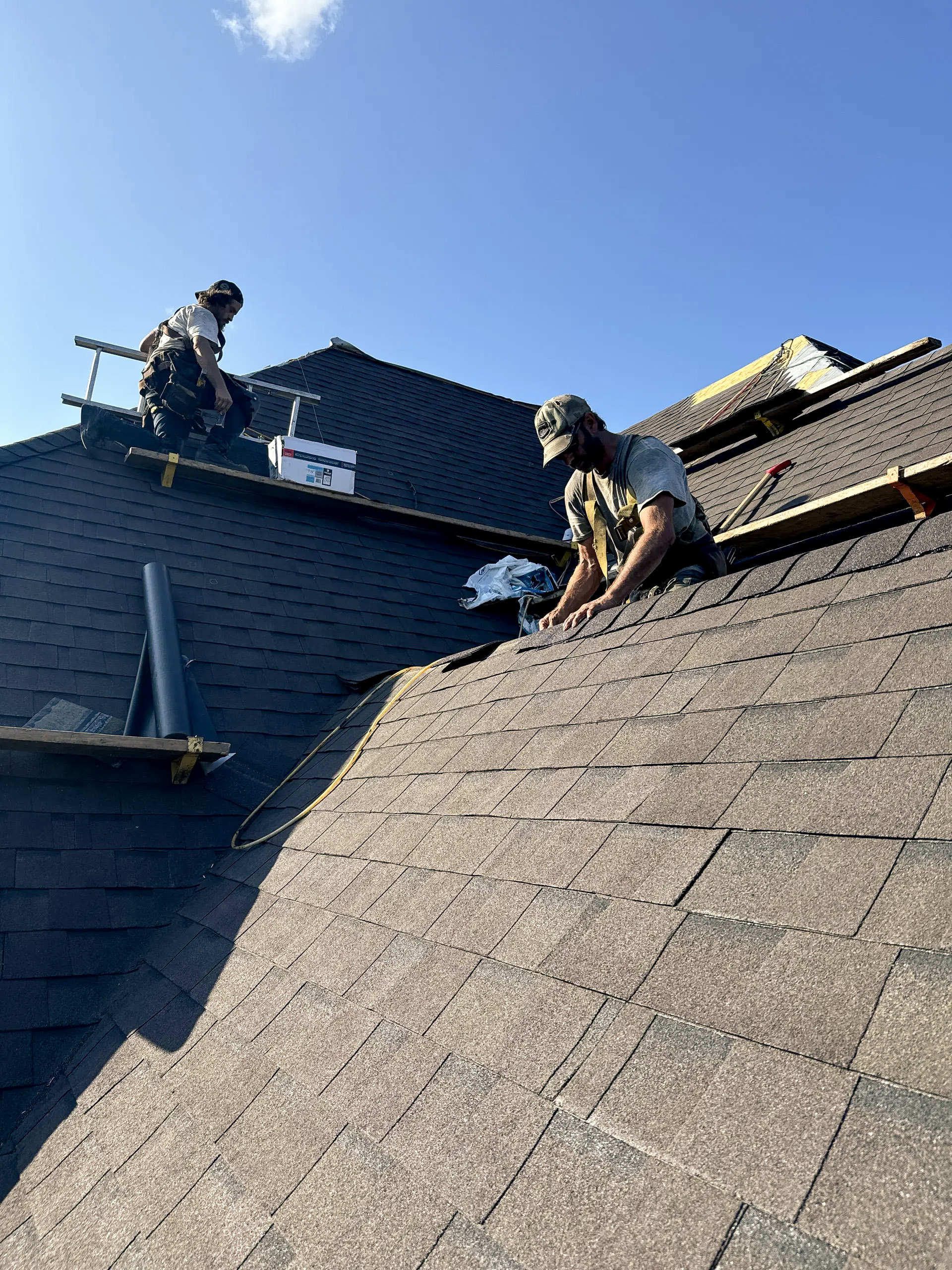
Source : TRX Mécanique
Roof maintenance starts with regular inspections by the homeowners. These help identify signs of wear or deterioration in time and allow you to plan necessary roof repairs. It’s a simple but crucial habit that lets you quickly spot structural weaknesses, early signs of leaks, or moss buildup on the surface.
How often should a roof be maintained? Creating a Roof Maintenance Plan
Inspect or hire to inspect your roof at least once a year, ideally in the spring after the snow melts or in the fall after leaves have fallen. Inspections are also a good idea after severe weather events like storms or strong winds, which can lift asphalt shingles, displace flashing, or damage sealants.
What Should Homeowners be Looking For?
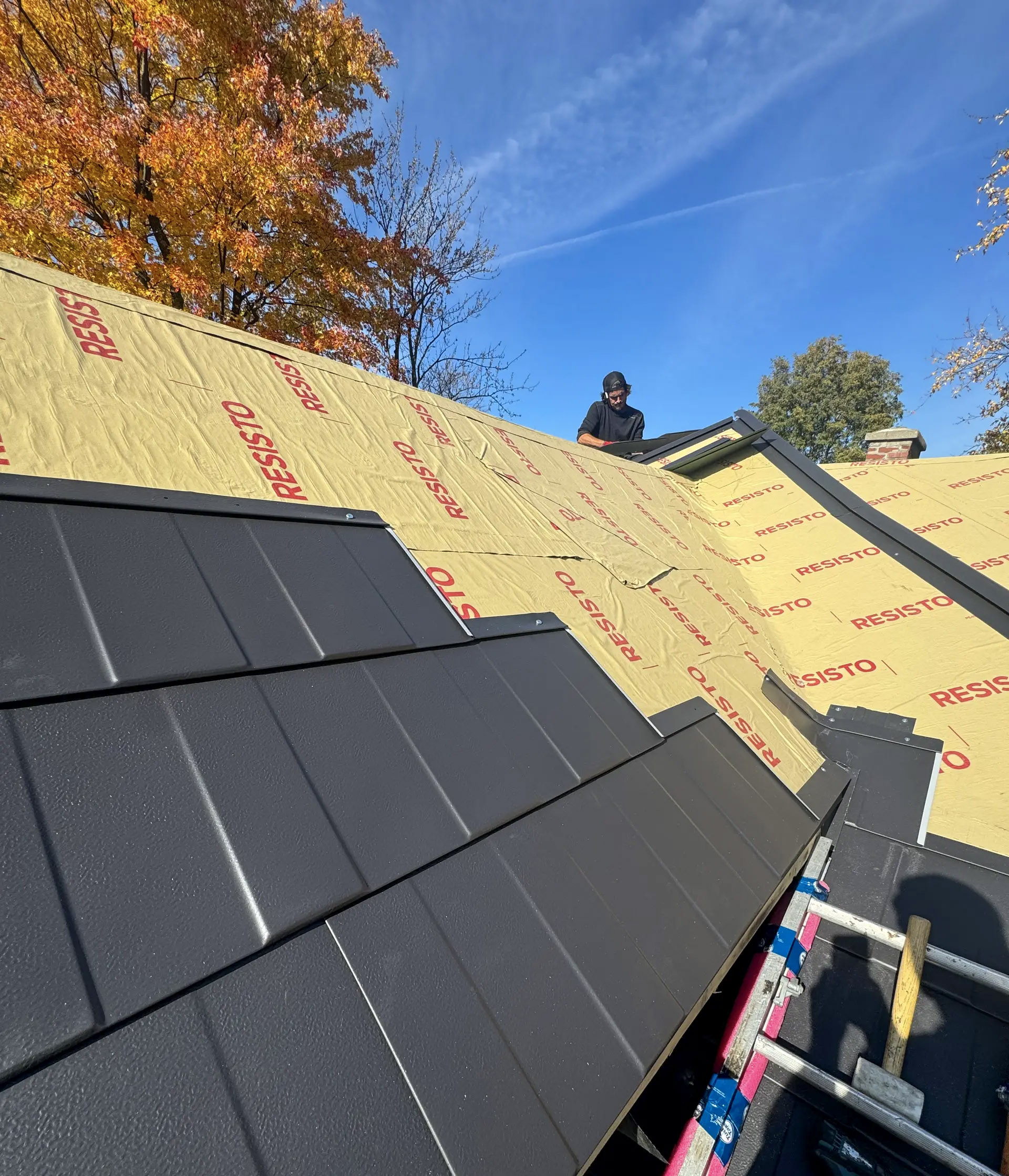
Source : TRX Mécanique
Key signs to watch for during your inspection include:
Cracked, lifted, or missing shingles—especially on sloped roofs
Dried out or deteriorated flashing joints around chimneys, skylights, and vents
Moss or mold growth, especially on shaded or poorly ventilated roofs
Debris clogging the gutters
Sagging areas or visibly warped roofing surfaces
DIY or Professional Roof Maintenance Services?
A personal inspection is a good starting point but doesn’t replace an expert’s evaluation. Professional roofers have the tools and experience to detect hidden issues, like attic moisture or membrane separation. They can also recommend maintenance services tailored to your roof type.
How do I take care of my roof?
Proper cleaning is vital for preserving your roof’s integrity. Though often underestimated, this step is the best way to remove factors that promote moisture retention and accelerate deterioration.
Why Clean Your Roof?
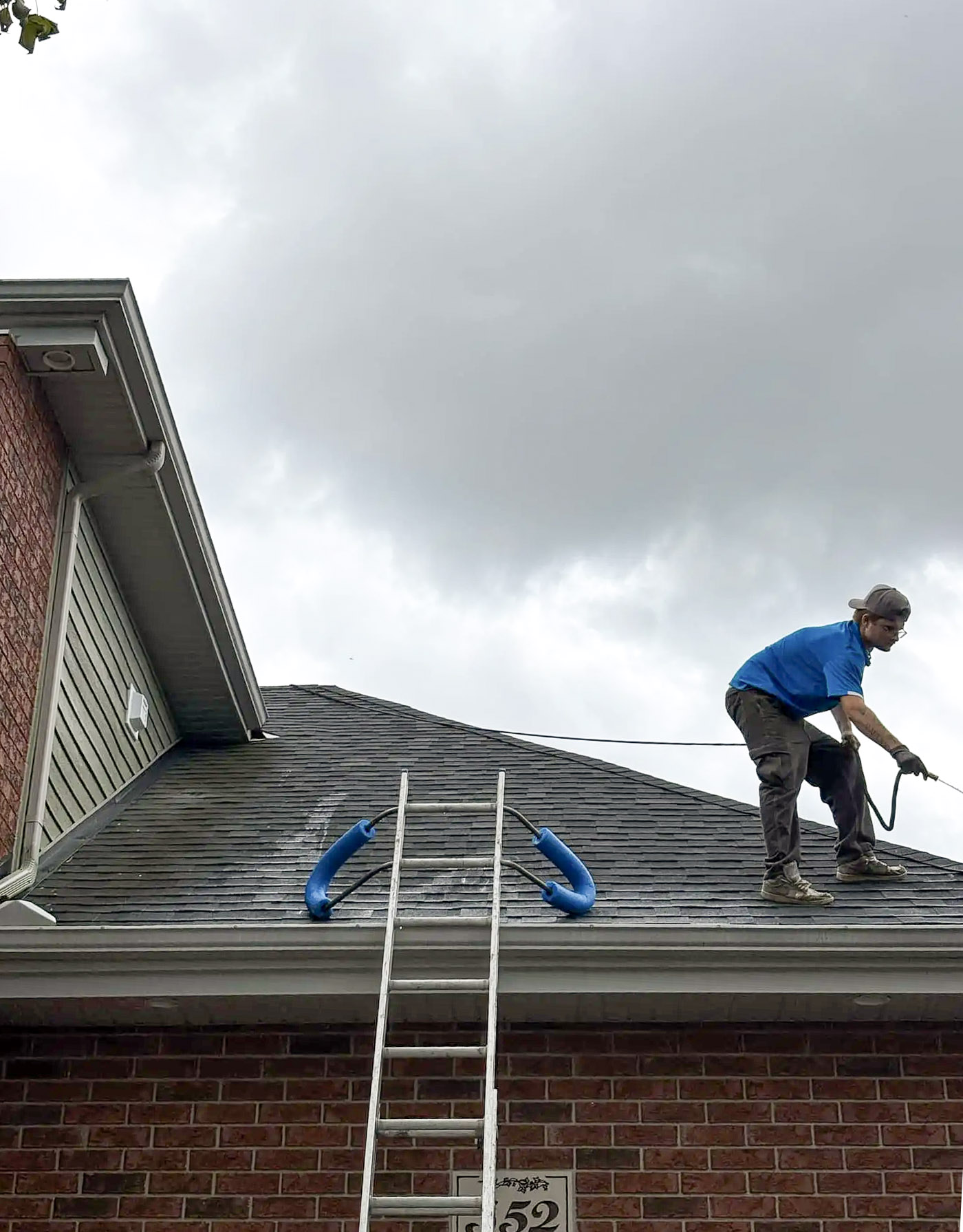
Source : Entretien Optiplus
Over time, debris, dead leaves, dust, algae, and moss build up on your roof. Not only are they unsightly, but they also block proper water drainage. A poorly cleaned roof retains moisture longer, which speeds up material wear and can lead to leaks or loss of insulation.
Regular cleaning extends the lifespan of your roofing material, especially asphalt shingles, which are more sensitive to humidity fluctuations. It also helps preserve the building’s appearance and better protect the structure against moisture.
What Cleaning Method a Homeowner Use?
Avoid high-pressure washing, which can damage the surface and shorten the roof’s life. Instead, clean by hand using a soft-bristled brush and a biodegradable cleaner. Rinse with low-pressure water to avoid damage. Installing zinc or copper strips can help prevent moss regrowth—an eco-friendly, long-term solution.
Safety First
Climbing on a roof is always risky. Use non-slip shoes, a secure ladder, and only work in dry conditions. Ideally, have someone with you. If your roof is steep or you’re unsure, it’s best to leave the job to professionals who can clean your roof safely and efficiently.
Snow Removal: A Critical Winter Task
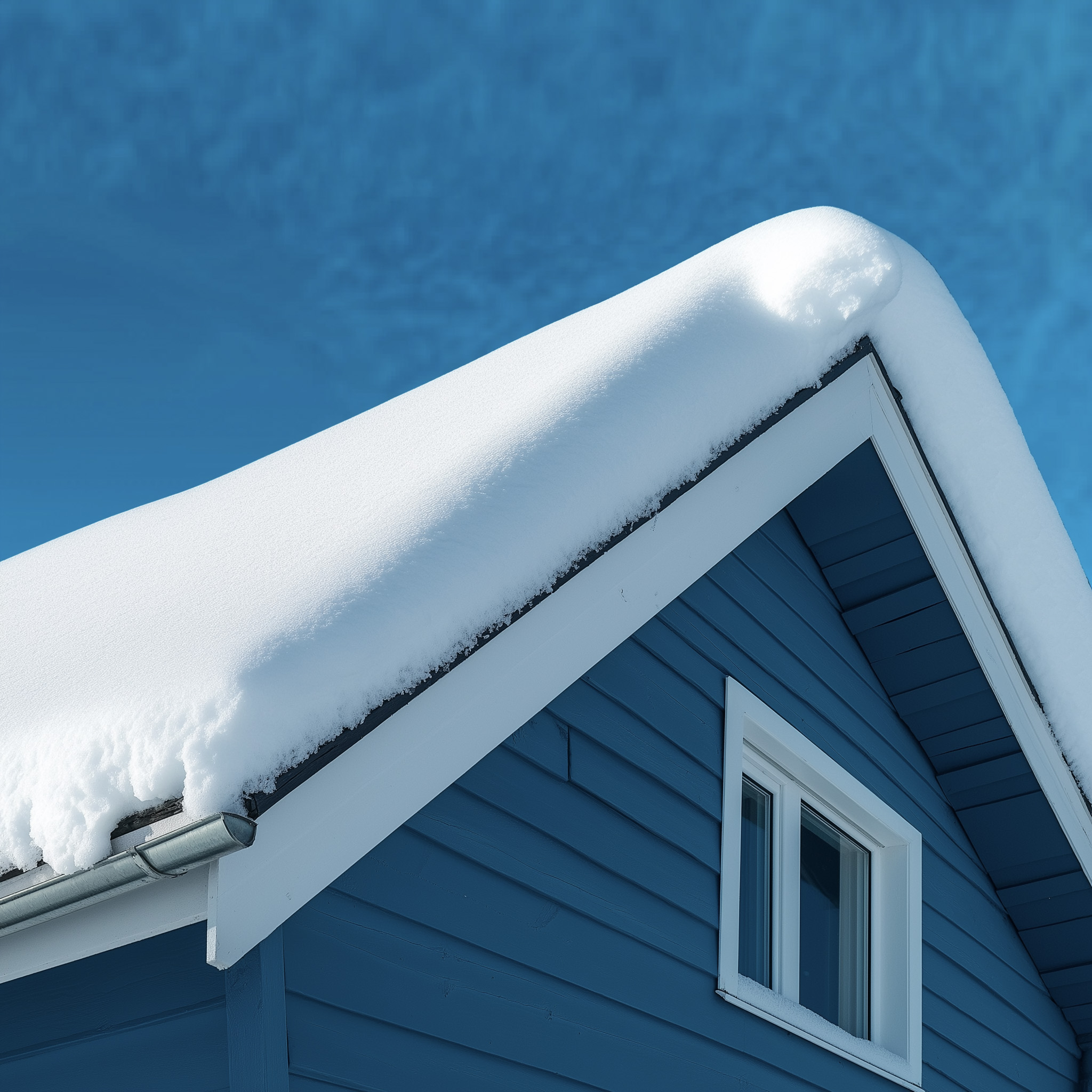
Source : Soumission Rénovation
Quebec winters are harsh, and heavy snow buildup can strain your roof, especially flat ones. That’s why snow removal is essential to seasonal maintenance.
What Are the Risks of Snow Accumulation?
Excessive snow puts major pressure on your roof, which can lead to sagging or even collapse—especially on older homes, garages, or sheds. Ice dams can also form, blocking water flow and causing leaks beneath the surface.
What Are Good Snow Removal Practices?
Clear snow when accumulation exceeds 60 cm (24 in), or if you notice signs of ice dam formation. Use a telescopic roof rake with a plastic blade to avoid damaging the surface. Never scrape down to the roofing material. If your roof is hard to access or you feel unsafe, hire professional snow removal services.
Gutter Maintenance: Prevent Leaks
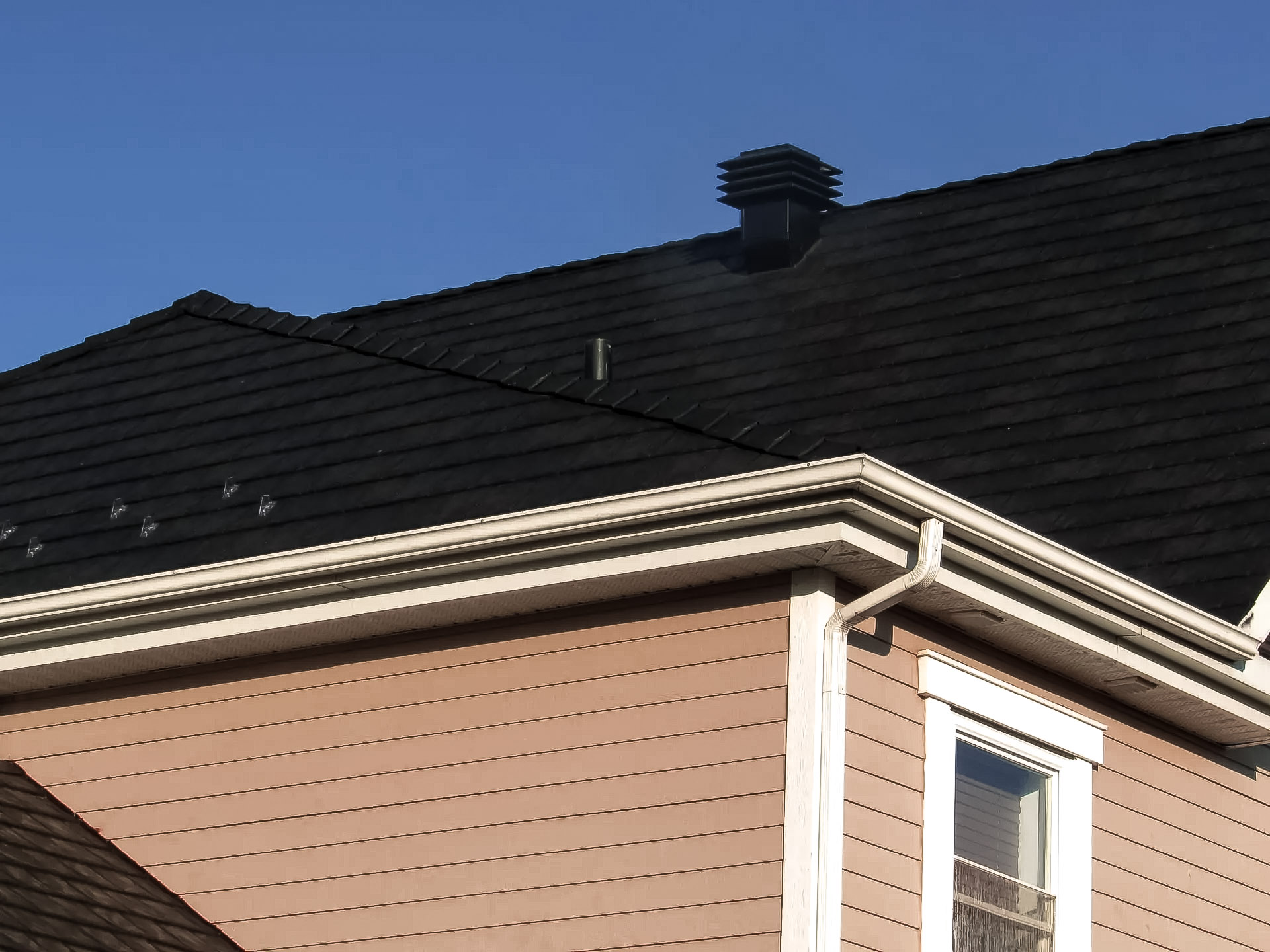
Source : Rockl.construction.inc
Gutters play a crucial role in preserving your roof. They divert water away from the structure, preventing water buildup that can damage materials. Poorly maintained gutters can quickly lead to serious problems like leaks, wall deterioration, weakened foundations, or mold growth. That’s why gutter maintenance is key to any good roof care plan.
Recommended Maintenance:
Clean gutters in spring and fall to remove leaves, twigs, and debris
Inspect downspouts for cracks, corrosion, or dislodgement
Check fasteners and brackets to prevent sagging or detachment—especially after freezing or heavy rains
Water Infiltration: Detect and Repair Early
Leaks often start subtly but can cause major damage if left unchecked. They affect not only the roof structure but can also promote mold growth, compromise insulation, and damage ceilings.
They tend to appear around roof penetrations: chimneys, skylights, wall joints, ventilation systems, or poorly sealed solar panels. Pay special attention to these vulnerable areas.
Inspect the Following:
Joints around flashing and openings
Condition of sealants and caulking
Cracks or bubbles in the roofing material
Preventive Measures:
Replace cracked or dried-out sealants
Seal leaks as soon as they appear
Add protective elements like snow guards or vapor barriers under the roofing material
Act quickly when problems arise. Simple repairs—like resealing joints or replacing flashing—can prevent much costlier damage down the line. For more complex issues, book a professional roofer for a thorough diagnosis and lasting repairs.
Preventive Treatments and Long-Term Protection
Beyond cleaning and repairs, preventive treatments can significantly extend the life of your roof. These products, tailored to your roof type, enhance resistance to the elements. They act as an extra barrier against dirt, moss, and moisture buildup, and can preserve your roof’s appearance for years.
What Products Are Available for Maintenance of Metal Roofs?
Some options include:
Anti-moss treatments to reduce vegetation growth
Water-repellent coatings to protect against moisture
Finishing products for metal roofs
Specific Guidelines for Different Roofing Materials
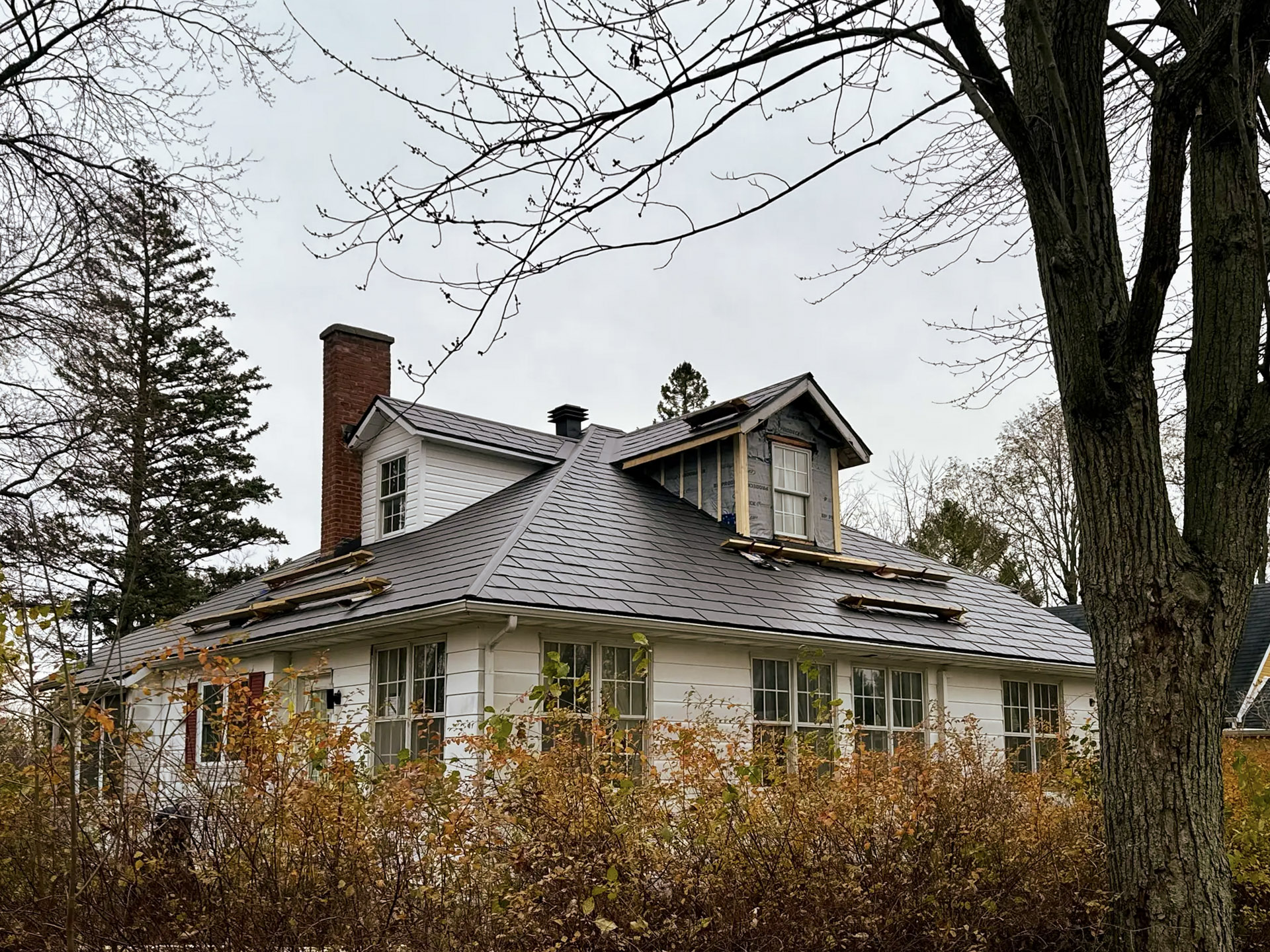
Source : TRX Mécanique
Each roof type has its own characteristics, which affect which products and methods to use. Choose treatments suited to your material to avoid damage and ensure effectiveness.
Asphalt shingles: Use gentle, non-corrosive treatments that won’t affect the granules’ adhesion. Avoid abrasive or oil-based solutions.
Clay/concrete tiles: Opt for mineralizing treatments that reduce porosity and moss growth. Products should be compatible with these materials.
Metal roofing: Apply anti-corrosion coatings and special finishes to prevent rust and maintain aesthetics. Ensure compatibility with galvanized or pre-painted metal.
Elastomeric membranes (flat roofs): Use UV-resistant sealants and coatings that handle freeze-thaw cycles and expansion. These help maintain waterproofing and prevent blisters or cracks.
These treatments should be applied in good weather, ideally by professionals. They reduce how often maintenance is needed, prevent water damage, and help your roof stay in great condition longer.
Maintenance for a Roof That Lasts
Roof maintenance requires diligence and foresight. Regular inspections, cleaning, gutter upkeep, leak prevention, and preventive treatments—together—help extend your roof’s lifespan. Regular checkups also let you better anticipate when a full roof replacement might be necessary.
Roof Maintenance FAQ
Why is it important to regularly maintain your roof?
Regular maintenance helps prevent water infiltration, avoids damage caused by frost, sun, or snow, and extends the life of the roofing. It also protects the building’s structure and maintains its value.
When should you inspect your roof?
Ideally twice a year—once in spring and once in fall. Inspections are also recommended after storms, high winds, or heavy snowfalls.
What signs may indicate a roofing problem?
Cracked, lifted, or missing shingles
Dried-out or damaged joints around openings
Presence of moss, mold, or moisture stains
Clogged or damaged gutters
Visible sagging or deformation of the roof surface
Is it safe to inspect or clean your roof yourself?
Yes, but only with proper precautions: wear non-slip shoes, use safety equipment, work in dry weather, and have someone with you. If the roof is steep or you’re unsure, hire a professional.
When is the best time to clean your roof?
In spring (after winter) and in fall (before freezing), or whenever moss or debris begins to accumulate.
What is the best way to clean your roof without damaging it?
Use a soft brush and a biodegradable cleaner. Avoid high-pressure jets. Rinse gently with a low-flow hose and stick to mild cleaning solutions.
What homemade cleaner can you use for your roof?
Mix 1 liter of warm water, 1 cup of white vinegar, and a few drops of dish soap. Spray, let sit for 15–30 minutes, then rinse with clean water.
Why is gutter maintenance important?
To prevent rainwater from pooling or seeping into walls, foundations, or the roof. Clogged gutters can also accelerate roofing wear.
How often should you clean your gutters?
Twice a year—in spring and fall—or more often if you live in a wooded area.
When should you remove snow from your roof?
When snow exceeds 60 cm (about 2 feet) or if ice dams form. Excess weight can cause sagging or water infiltration.
How much does professional roof snow removal cost?
Expect between $300 and $1,000 depending on the surface area, accessibility, and snow buildup. Extra charges may apply for emergencies or hard-to-reach roofs.
How can you prevent moss from forming on your roof?
Clean the roof regularly
Install zinc or copper strips
Apply an anti-moss treatment suited to your roofing material
What preventive treatments can be applied to a roof?
Anti-moss treatments for sloped roofs
Water-repellent coatings to reduce humidity
Anti-corrosion paints for metal roofs
UV-protective coatings for flat roof membranes
Should maintenance vary by roof type?
Yes. Each material (shingles, tiles, sheet metal, membranes) has specific requirements. Use compatible products to avoid damage and ensure optimal performance.
Who can apply preventive treatments?
While some treatments can be DIY, it’s best to hire a professional to ensure safe and effective application.
Best way to handle the maintenance of solar panels on your roof?
Solar panels require minimal maintenance, but it’s important to keep them clean and free of debris like leaves, dust, or snow to maintain efficiency. Inspect them twice a year—ideally during your regular roof inspections—and after major weather events. Avoid using abrasive cleaners or pressure washers. If the panels are hard to access, it’s best to hire a qualified professional.
What does maintenance of green roofs involve?
Green roofs require regular upkeep to stay healthy and functional. This includes weeding, trimming overgrown plants, removing debris, checking drainage systems, and inspecting the waterproofing membrane. Maintenance is typically done two to four times a year, depending on the roof type and plant species. Irrigation systems may also need seasonal adjustments or repairs.
Why is it important to inspect the chimney during roof maintenance?
Chimneys can be a common source of leaks if flashing is damaged or if the masonry is deteriorating. During roof inspections, it’s essential to check the chimney base, joints, and sealants to prevent water infiltration and structural damage.
Looking for something else?
Related articles
The latest industry news, interviews, technologies, and resources.

Amanda Harvey
•07 Nov 2023
If you find an infiltration of water through the roof of your home, then it may raise some concerns about the consequences. In the same regard, this situation should raise questions about the measures that need to be taken to avoid this unpleasant occurrence.

Editorial Team
•07 Nov 2023
For both humans and the home, winter is difficult to endure. Between the cold weather, the strong winds, the ice, and the snow, we all require a little bit of cold weather protection.
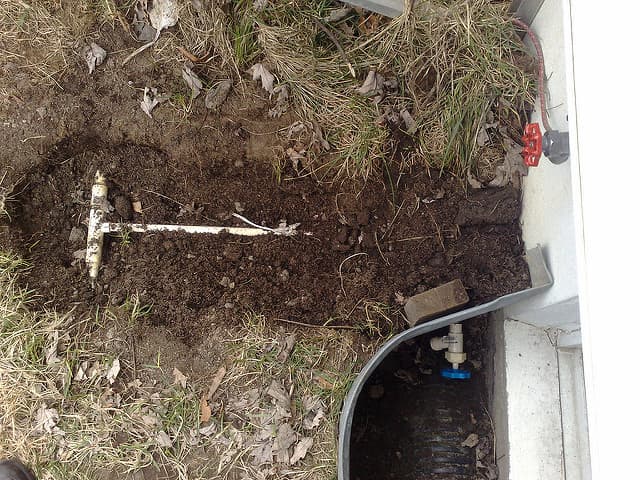
Cynthia Pigeon
•20 Nov 2023
Do you know if your yard is properly drained? Have you noticed white powder on the concrete, mould at the bottom of the walls, water or wet concrete on the slab, or even a lingering humidity or a foul odour? Well, if so, it is about time to upgrade to a French drain!

Christine Simard
•07 Nov 2023
When scrolling Pinterest or Instagram, it’s easy to quickly notice changes in interior design trends. Usually, your feed is curated according to what you enjoy looking at but sure enough, one stray post can catch your attention and soon send you down the rabbit hole of new decor styles and trends for the year.

Editorial Team
•07 Nov 2023
RenoQuotes.com followed home renovation contractor Ali Nazar on the job at the site of a basement renovation project in Montreal. Check out this interview to know more about the subject of basement renovations.